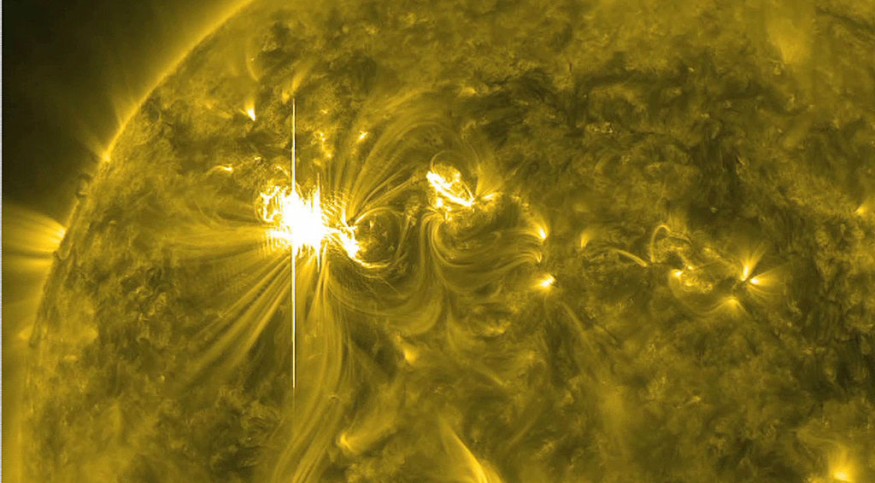A solar flare eruption from the Sun, which lasted for three hours, on Monday, June 13, released a vast amount of charged particles in the form of a solar radiation.
As a result, a geomagnetic storm and a radio blackout are likely to strike Earth again, causing disruption to radio frequencies and satellite signals.
The solar event was initially observed by NASA's Solar Dynamics Observatory (SDO).
In addition, NOAA's Space Weather Prediction Center (SWPC) also observed the said phenomenon, issuing a geomagnetic storm watch for Wednesday, June 15.
The prolonged time of the solar storm has been estimated to have generated a substantial amount of particles to cause enough damage to our planet's communication and global positioning system (GPS) technologies, which were affected in previous events.
While radiation storms primarily threaten biological organisms, magnetic storms and blackouts affect aircraft, devices, and equipment, which rely on technology where radio and satellites are grounded.
This is made possible as outbursts from solar activities disrupt the planet's magnetosphere.
Over recent months, solar flares and coronal mass ejections (CMEs) have resulted in several cases of technological disruption in different parts of the world, including in Australia, Asia, and Europe.
Geomagnetic Watch

The SWPC issued a G1-Minor Geomagnetic Storm Watch (G1 Watch) and this came after a CME linked with the solar flare has been classified to have the intensity of an R1-Minor Radio Blackout, which occurred at 4:07 a.m. UTC on Monday.
Under the watch, the SWPC said the approaching space storms will likely pass through our magnetosphere along with a "positive polarity coronal hole."
The combined impact will produce a "G1-Minor storming."
The solar flare itself had a registered strength of M3.4, which is considered a "medium" class as part of a three-tier scale when scientists classify these solar flares into three classes: C, M, and X, with C being the weakest level and X being the strongest, a cited by Space.com.
The different categorization means X-class solar flares are considered to be the strongest.
In April 2001, the "largest solar flare in recorded history" was captured by the Solar and Heliospheric Observatory (SOHO) satellite.
The solar outburst came from the northwest limb of the Sun, traveling at a speed of 7.2 million kilometers per hour, according to NASA.
Space Weather Disturbances
The levels of space weather disturbances or solar storm hazards are based from the NOAA Space Weather Scales.
For geomagnetic storms, G1-Minor is the weakest and G-5 Extreme is the strongest, mainly affecting navigation signals.
On the other hand, radio blackouts have R1-Minor as its lowest and R5-Extreme to be its highest, targeting both low and high radio frequencies.
Lastly, solar radiation storms have been classified that its S1-Minor is the smallest and S5-Extreme to be the largest.
Aside from its biological effects to both animals and humans. These types of hazards can also affect satellite operations.
These space weather measurements are similar to climatic and geological events on Earth when various agencies classify the strength of hurricanes, tornadoes, earthquakes, and among others.
© 2025 NatureWorldNews.com All rights reserved. Do not reproduce without permission.





